Best Squash Casserole Recipe for Every Occasion
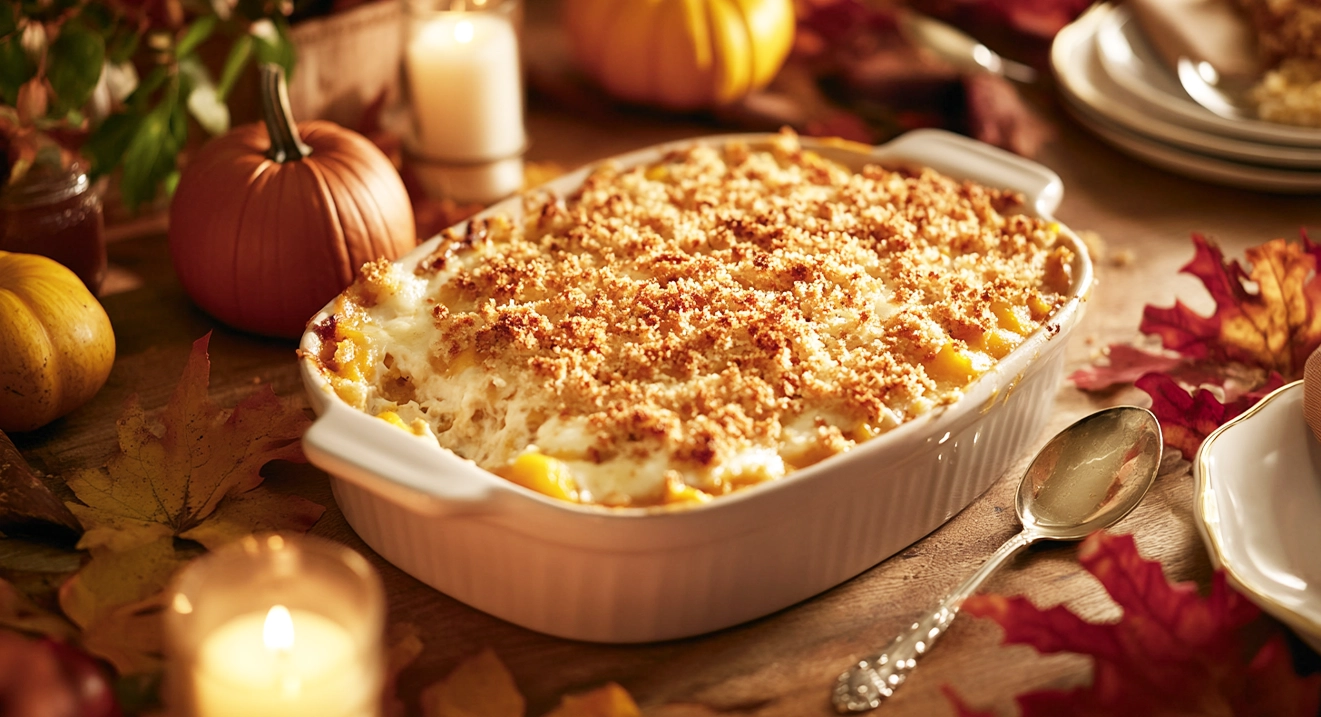
Introduction to Squash Casserole Recipe
Squash casserole recipe is a beloved comfort food that combines squash’s natural sweetness with creamy, savory ingredients to create a hearty and satisfying dish. It’s a versatile recipe often enjoyed as a side dish but hearty enough to stand alone as a main course. Squash casserole’s simplicity and adaptability make it a staple in kitchens across various regions, especially in the Southern United States.
What is a Squash Casserole?
A squash casserole is a baked dish featuring fresh squash, typically yellow squash or zucchini, mixed with cheese, eggs, breadcrumbs, or crackers. The result is a creamy, flavorful casserole with a golden, crispy topping. Due to its easy preparation and universally appealing taste, it’s a favorite at potlucks, family gatherings, and holiday dinners.
Squash casseroles are versatile, allowing for endless variations. For extra flavor, ingredients like onions, bell peppers, or herbs can be added, and toppings can range from crushed crackers to panko breadcrumbs or shredded cheese.
The History and Origin of Squash Casserole Recipe
The origins of squash casserole are deeply rooted in Southern American cuisine. Squash, a native vegetable to the Americas, has been a dietary staple for centuries, celebrated for its versatility and ease of cultivation. Native Americans introduced squash to early settlers, who incorporated it into their diets, and over time, creative cooks developed various ways to prepare it.
By the 19th and early 20th centuries, casseroles gained popularity as a practical way to use leftovers and stretch ingredients. Squash casserole became a Southern favorite thanks to its combination of readily available squash and simple pantry staples like butter, eggs, and breadcrumbs.
Today, squash casserole remains a cherished dish, reflecting tradition and creativity. Its adaptability ensures that it continues to evolve, delighting new generations of home cooks and diners.
Why You’ll Love This Recipe
Squash casserole is more than just a dish; it’s a recipe that checks all the boxes for convenience, nutrition, and versatility. Here’s why this beloved classic will become a favorite in your kitchen:
Simple and Easy to Make
With straightforward steps and minimal prep time, squash casserole is perfect for cooks of all skill levels. You can whip up this dish quickly using fresh ingredients and everyday pantry staples without any fancy techniques. It’s a no-fuss recipe that delivers maximum flavor with minimal effort.
Nutritious and Budget-Friendly
Squash is the star of this casserole, bringing a wealth of nutritional benefits. Packed with vitamins A and C, fiber, and antioxidants, squash adds healthfulness to every bite. The recipe uses affordable ingredients, making it a cost-effective choice for feeding a family or a crowd.
Perfect for Any Occasion
Whether preparing a weeknight dinner, contributing to a potluck, or planning a holiday feast, squash casserole fits the bill. It pairs well with various dishes, from roasted meats to vegetarian sides, making it a versatile addition to your menu. Its creamy texture and savory flavors are sure to please any palate.
Ingredients Overview
The beauty of squash casserole lies in its simplicity, relying on a handful of fresh and pantry-friendly ingredients to create a delicious and comforting dish. Here’s a breakdown of the key components:
Types of Squash Used
The choice of squash is the foundation of any great casserole. Common options include:
- Yellow Squash: The most traditional choice for squash casserole, yellow squash is tender and mildly sweet and pairs perfectly with savory ingredients.
- Zucchini: Another popular option, zucchini has a similar texture to yellow squash and adds a slightly earthier flavor.
- Butternut Squash (Optional): For a sweeter twist, butternut squash can be used, though it may require slightly longer cooking time.
- Combination of Squash: Mixing yellow squash and zucchini can add depth of flavor and color to your casserole.
Always select fresh, firm squash without blemishes for the best results.
Essential Pantry Staples for Squash Casserole Recipe
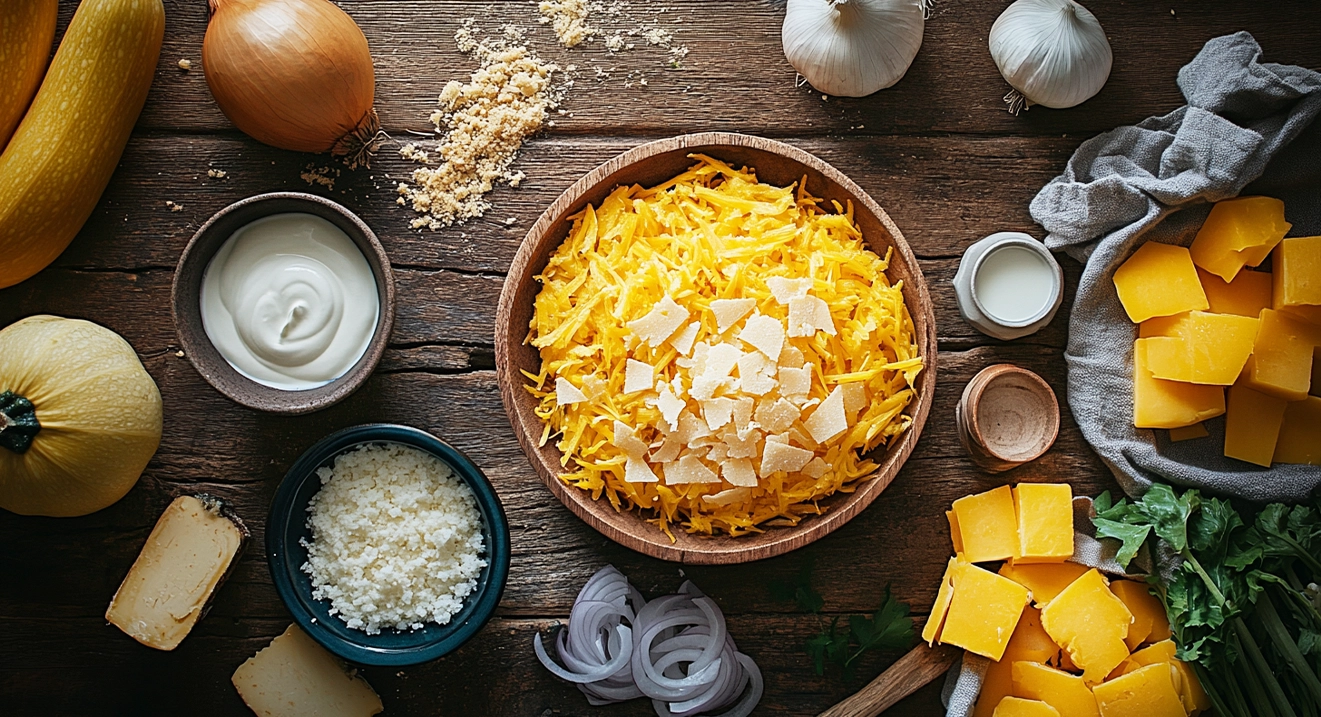
In addition to squash, a few pantry staples bring this dish together with creamy textures and rich flavors:
- Cheese: Shredded cheddar, mozzarella, or Parmesan are common choices, adding a creamy and savory touch.
- Eggs: Essential for binding the casserole, eggs help create a firm yet tender texture.
- Breadcrumbs or Crushed Crackers: These are used for binding and topping, and breadcrumbs or crackers like Ritz provide a crispy golden crust.
- Milk or Cream: Adds creaminess and moisture, making the casserole rich without being heavy.
- Onion: Chopped onions enhance flavor with subtle sweetness and depth.
- Butter: For sautéing the onions and adding richness to the dish.
- Seasonings: Simple spices like salt, pepper, and garlic powder bring out the ingredients’ natural flavors.
Equipment You’ll Need
To prepare a perfect squash casserole, you’ll need a few essential kitchen tools and the right baking dish to ensure optimal results. Here’s a guide to the equipment you’ll need:
Basic Kitchen Tools
- Cutting Board: A sturdy cutting board for chopping squash, onions, and other ingredients.
- Chef’s Knife: A sharp knife to make slicing and dicing quick and precise.
- Mixing Bowls: At least two medium to large bowls mix the casserole ingredients and prepare the topping.
- Sauté Pan or Skillet: For pre-cooking, onions or other ingredients that must be softened before baking.
- Measuring Cups and Spoons: To ensure accurate measurements of ingredients like milk, breadcrumbs, and seasonings.
- Spatula or Wooden Spoon: This stirs and combines ingredients without scratching your cookware.
- Grater: A grater is essential for shredding it fresh if you’re using block cheese.
Recommended Baking Dishes for Optimal Results
- Casserole Dish (9×13 inches): A classic rectangular baking dish is ideal for even cooking and serving multiple portions. Look for a ceramic, glass, or cast iron dish for even heat distribution.
- Square Baking Dish (8×8 inches): This dish is perfect for smaller people or for cooking for a smaller group.
- Non-Stick or Greased Baking Dish: Always grease your baking dish or use a non-stick option to ensure easy cleanup and prevent sticking.
- Optional: Individual Ramekins: For a fun presentation, use ramekins to create single-serve portions of squash casserole.
Step-by-Step Instructions for the Perfect Squash Casserole Recipe
- Prepping the Squash
Properly preparing the squash is crucial for yocasserole’se’s best texture and flavor.
- Wash and Slice: Rinse the squash thoroughly under cold water and pat dry. Slice it into thin, even rounds (about 1/4 inch thick) to ensure uniform cooking.
- Optional Salting: If your squash is particularly watery, sprinkle it with salt and let it sit for 10–15 minutes. Pat the slices dry with a paper towel to remove excess moisture.
- Pre-Cook the Squash: Lightly sauté the squash in a skillet with butter or olive oil until just tender. This step reduces water content and enhances flavor.
- Mixing the Ingredients
Once the squash is ready, it’s time to combine it with the other ingredients.
- Prepare the Base: In a large mixing bowl, whisk together eggs, milk or cream, and seasonings (salt, pepper, garlic powder). This mixture binds and flavors the casserole.
- Add the Vegetables: Stir in the sautéed squash and any additional vegetables (like onions or bell peppers).
- Incorporate Cheese: Mix in your choice of shredded cheese (cheddar or mozzarella are popular) for creaminess.
- Combine with Toppings: Fold in breadcrumbs or crushed crackers. They’re part of the casserole base.
- Baking Tips for Golden Perfection
The final step is to bake your casserole to perfection.
- Assemble the Casserole: Transfer the squash mixture to a greased baking dish, spreading it evenly.
- Add the Topping: Sprinkle the top with more cheese and a generous layer of breadcrumbs or crushed crackers for a crispy golden crust. Dot with small pieces of butter for extra richness.
- Bake: Place the dish in a preheated oven at 350°F (175°C) and bake for 30–40 minutes until the casserole is set and the top is golden brown.
Variations and Customizations
Squash casserole recipe is a versatile dish that can be tailored to meet different dietary needs and flavor preferences. Here are some popular variations and customizations to try:
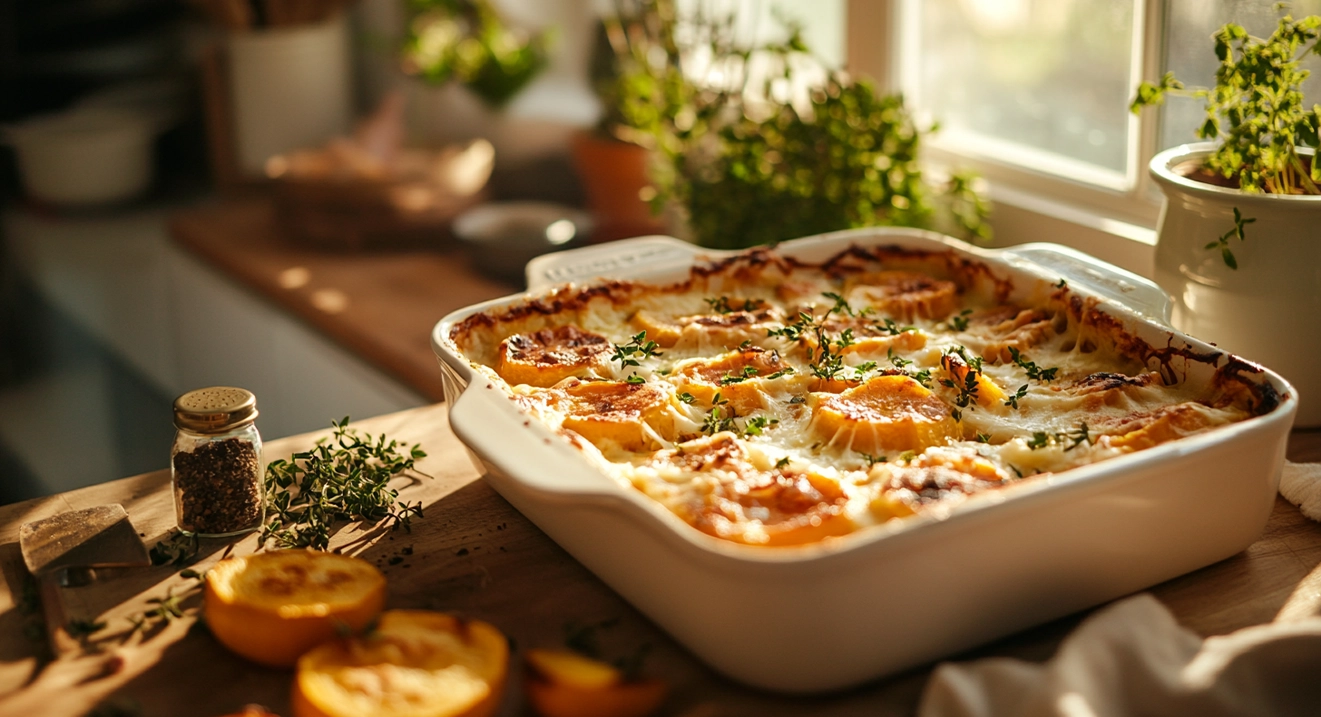
Gluten-Free Squash Casserole
For those avoiding gluten, this variation ensures you can enjoy squash casserole without compromise.
- Substitute the Breadcrumbs: Use gluten-free breadcrumbs or crushed gluten-free crackers for the topping.
- Check All Ingredients: Ensure any cheese, cream, or seasoning blends used are certified gluten-free.
- Alternative Thickeners: Replace flour (if used in your recipe) with cornstarch or gluten-free flour.
With these simple swaps, your casserole will remain just as delicious and satisfying while being safe for gluten-sensitive diners.
Vegan Options
Transforming squash casserole into a vegan-friendly dish is easy with a few plant-based substitutions.
- Replace Dairy: For creaminess, use plant-based milk (like almond, soy, or oat milk) and vegan cheese alternatives.
- Egg-Free Binding: For structure, replace eggs with a flaxseed egg (1 tablespoon ground flaxseed + 3 tablespoons water) or silken tofu.
- Vegan Butter or Oil: Use coconut or vegan butter for sautéing and topping.
- Boost Flavor: Add nutritional yeast to mimic the cheesy flavor while keeping the dish plant-based.
This version is perfect for vegan guests or anyone looking for a dairy- and egg-free option.
Adding Protein Like Chicken or Bacon
For a heartier meal, incorporating protein takes squash casserole to the next level.
- Chicken: Add cooked, shredded chicken to the casserole mixture before baking. Rotisserie chicken works well for convenience.
- Bacon: Crispy, crumbled bacon can be mixed into the casserole or sprinkled on top for added flavor and texture.
- Other Options: Consider cooked sausage, turkey, or tofu for a unique twist.
These additions make the casserole a satisfying main dish while enhancing its flavor.
Additional Ideas
- Herbs and Spices: Customize with fresh herbs like thyme, rosemary, or dill, or add a pinch of paprika or chili flakes for extra flavor.
- Vegetable Additions: For more variety and nutrition, include vegetables like mushrooms, bell peppers, or spinach.
- Low-Carb Version: Skip the breadcrumbs and top with crushed nuts or Parmesan cheese for a keto-friendly option.
Health Benefits of Squash Casserole recipe
Squash casserole is a delicious comfort food with numerous health benefits thanks to its nutrient-rich ingredients. By understanding the nutritional value of squash and incorporating healthier substitutes, you can enjoy a guilt-free version of this classic recipe.
Nutritional Profile of Squash
Squash, the star ingredient in this casserole, is a powerhouse of essential nutrients:
- Low in Calories: Squash is naturally low in calories, making it an excellent base for a satisfying yet light dish.
- Rich in Vitamins and Minerals:
- Vitamin A: Supports eye health and boosts the immune system.
- Vitamin C: Acts as an antioxidant, promoting healthy skin and a strong immune response.
- Potassium: Helps regulate blood pressure and maintain heart health.
- High in Fiber: It Aids digestion, keeps you full longer, and helps regulate blood sugar levels.
- Antioxidants: Compounds like beta-carotene in squash combat oxidative stress, reducing inflammation and promoting overall health.
These nutritional benefits make squash an excellent ingredient for those aiming to eat healthier without sacrificing flavor.
Healthier Substitutes for Common Ingredients
To make your squash casserole even more nutritious, consider swapping traditional ingredients for healthier alternatives:
Cheese
- Substitute with Low-Fat Cheese: Use reduced-fat cheddar or mozzarella to cut down on saturated fats.
- Vegan Cheese: Try plant-based cheese made from cashews or almonds for a dairy-free option.
Breadcrumbs or Crackers
- Whole-Grain Breadcrumbs: Opt for whole-grain or multigrain breadcrumbs to add fiber.
- Gluten-Free Alternatives: Use crushed gluten-free crackers or almond flour for a grain-free option.
- Nuts or Seeds: Top with chopped almonds, sunflower, or pumpkin seeds for a crunchy, nutrient-rich topping.
Milk or Cream
- Plant-Based Milk: Almond, oat, or soy milk can replace dairy milk while reducing calories and fat.
- Greek Yogurt: Use plain, unsweetened Greek yogurt for a creamy texture with added protein.
Butter
- Olive Oil: Swap butter with olive oil for a heart-healthy fat alternative.
- Vegan Butter: Use plant-based butter for a dairy-free substitution.
Eggs
- Egg Replacements: Use flaxseed eggs or unsweetened applesauce for binding. You’re avoiding eggs.
Additional Tips for a Healthier Casserole
- Increase Vegetables: Add more veggies like spinach, mushrooms, or kale to boost the fiber and nutrient content.
- Reduce Salt: Season with fresh herbs and spices instead of salt to lower sodium levels.
- BakDon’t Fry: Stick to baking for a lighter, healthier dish.
FAQs About Squash Casserole Recipe
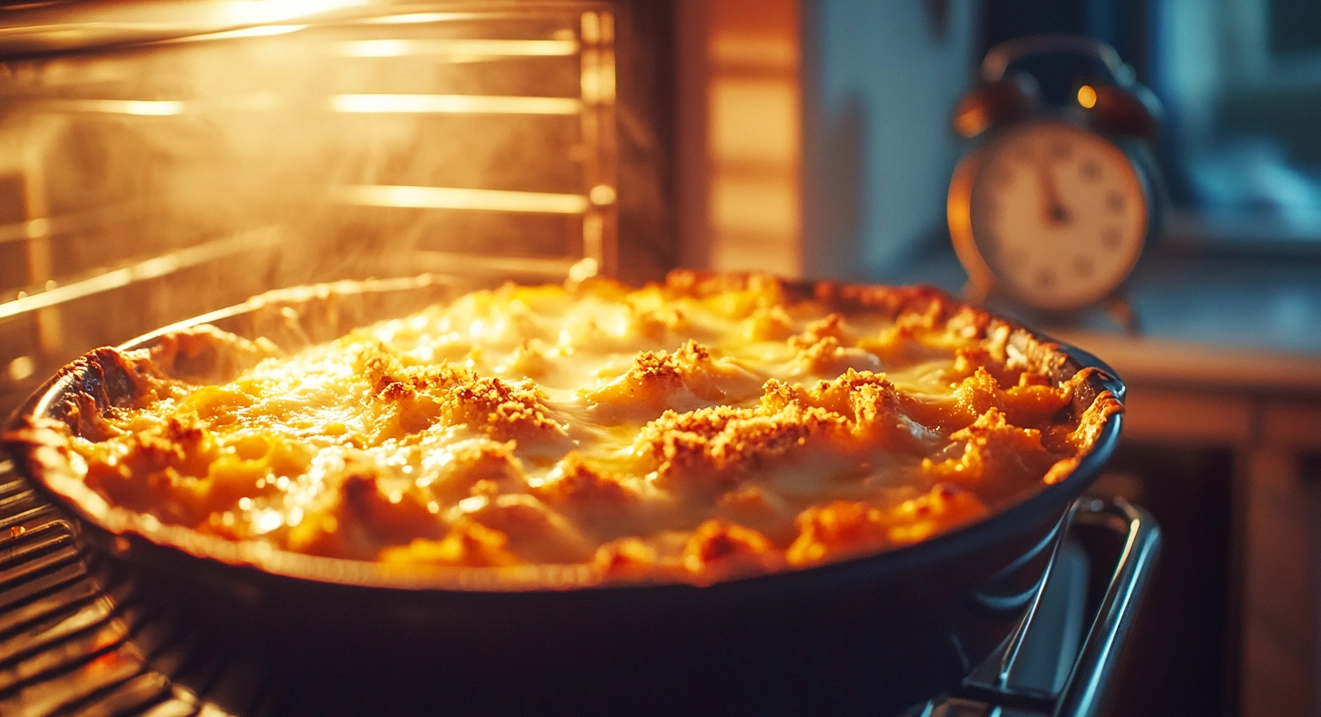
Here are answers to common questions about squash casserole to help you perfect this classic dish.
What is squash casserole made of?
Squash casserole typically consists of the following ingredients:
- Squash: Usually yellow squash or zucchini.
- Binding Ingredients: Eggs, milk or cream, and cheese to create a creamy texture.
- Seasonings: Salt, pepper, and optional spices like garlic powder or paprika.
- Topping: Breadcrumbs or crushed crackers, often combined with butter or cheese for a crispy, golden crust.
Additional ingredients like onions, bell peppers, or herbs can be added for extra flavor and texture.
What is the cooking method for squash?
The primary cooking method for squash casserole involves:
- Pre-Cooking the Squash: Sauté or steam the squash until tender. This step helps reduce water content and enhances flavor.
- Mixing: Combine the squash with the binding ingredients and seasonings.
- Baking: Transfer the mixture to a greased casserole dish, add the topping, and bake at 350°F (175°C) for 30–40 minutes until set and golden brown.
How do you keep squash casserole from getting watery?
To prevent a watery casserole, follow these tips:
- Salt the Squash: Sprinkle sliced squash with salt and let it sit for 10–15 minutes. Pat it dry with a paper towel to remove excess moisture.
- Pre-Cook the Squash: Sauté or steam the squash to release and drain excess water before mixing it with other ingredients.
- Avoid Overmixing: Avoid overmixing the ingredients, as this can introduce unnecessary moisture.
- Use a Thickener: Add a small amount of flour, cornstarch, or breadcrumbs to the mixture to absorb any remaining liquid.
What is the key to making a good casserole?
The key to a successful casserole lies in balancing flavors, textures, and cooking methods:
- Choose Fresh Ingredients: Start with fresh squash and quality cheese for the best taste.
- Layer Flavors: Use sautéed vegetables, herbs, and spices to enhance tdish’sh’s depth.
- Get the Right Texture: Achieve a creamy interior with a crispy, golden topping by combining the right amount of cheese, eggs, and breadcrumbs.
- Cook Evenly: Bake at the recommended temperature and let the casserole rest for a few minutes after baking to allow it to set before serving.
Conclusion and Final Thoughts
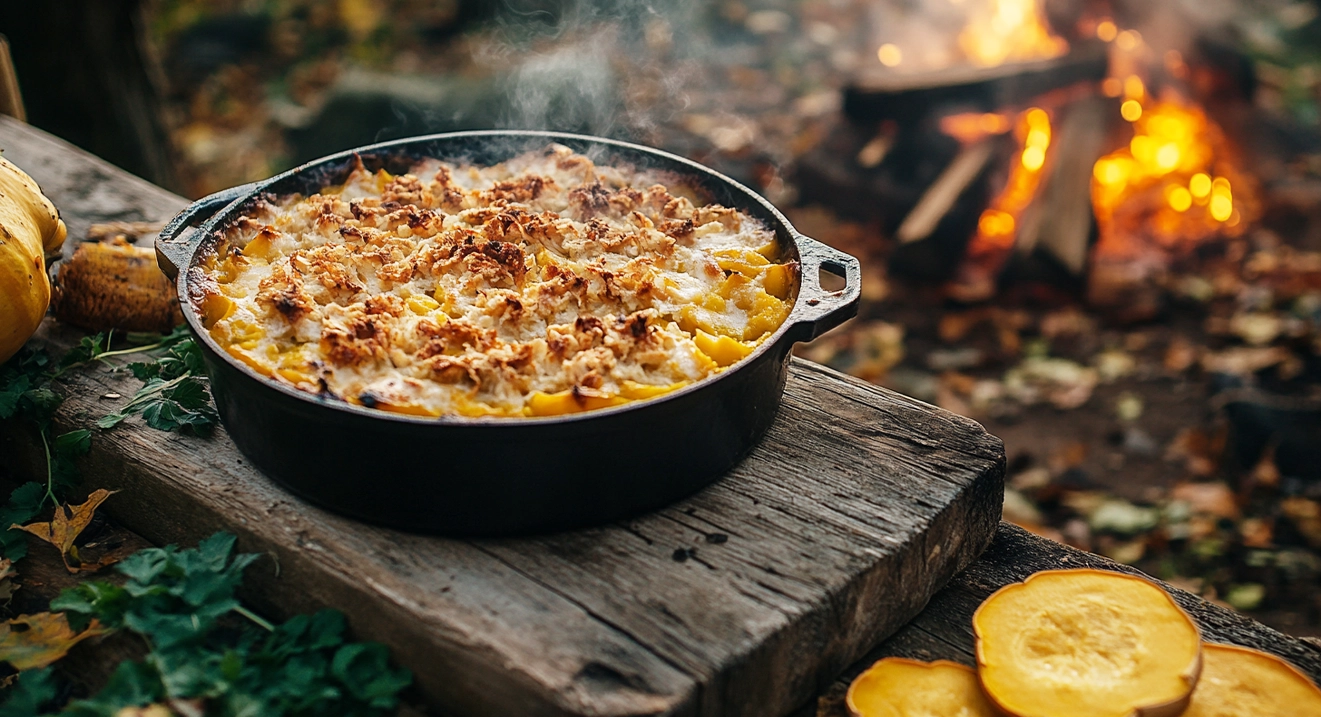
Squash casserole is a timeless dish that combines simplicity, versatility, and delicious flavors into one comforting recipe. From understanding its roots and essential ingredients to mastering step-by-step instructions and exploring creative variations, you now have all the tools to make a perfect squash casserole.
Recap of Key Points
- Key Ingredients: Fresh squash, cheese, eggs, and breadcrumbs form the foundation of the dish, with endless options for customization.
- Cooking Techniques: Pre-cooking the squash and using the proper binders and toppings ensure a flavorful, well-textured casserole.
- Health Benefits: Squash is nutrient-rich, and healthier substitutes can make this dish lighter without sacrificing taste.
- Variations: Gluten-free, vegan, and protein-packed options let you tailor the recipe to your preferences or dietary needs.
Encouragement to Try Your Twist on the Recipe
One of the best aspects of squash casserole is its adaptability. Whether you stick to the classic recipe or put your spin on it, this dish invites creativity. Add your favorite spices, include a unique topping, or try a new mix of vegetables to make it truly yours.
So why wait? Gather your ingredients, preheat your oven, and enjoy making a squash casserothat’st’scassero that’s delicious and uniquely reflective of your culinary style. Your perfect casserole awaits—happy cooking!
